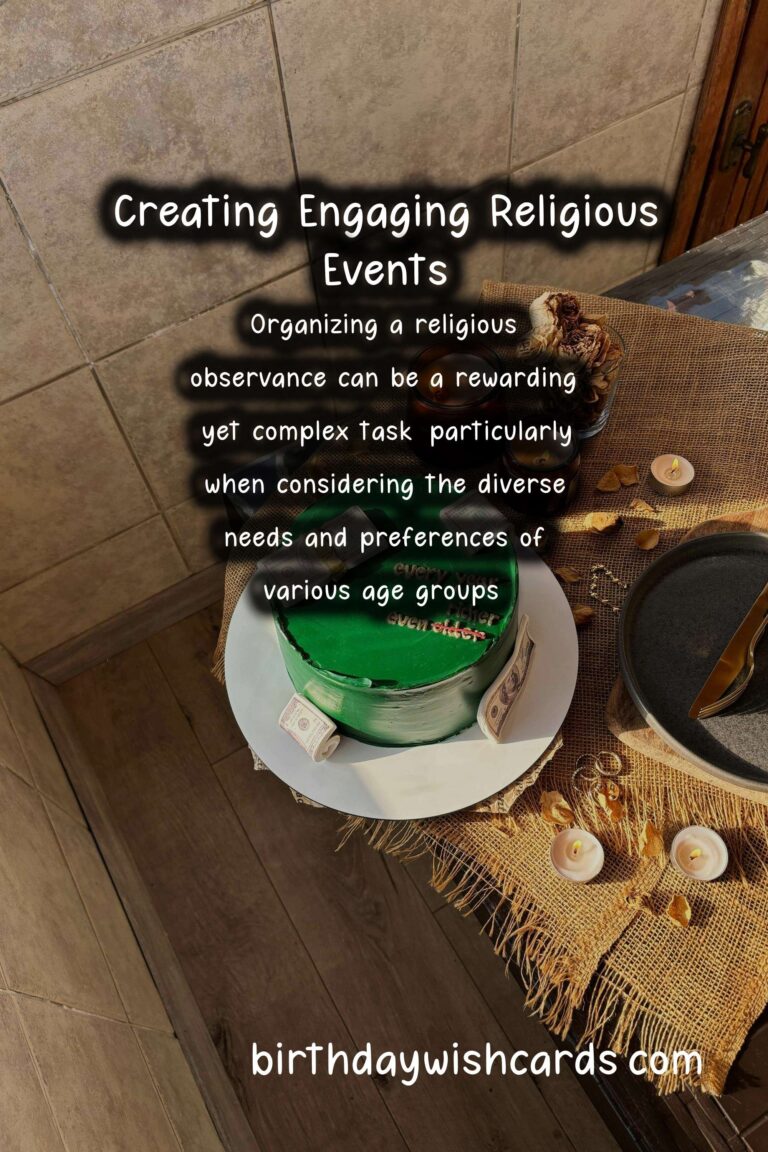
Organizing a religious observance can be a rewarding yet complex task, particularly when considering the diverse needs and preferences of various age groups. Effective planning requires thoughtful consideration and a well-structured approach. In this article, we will explore strategies and tips for organizing religious observances that cater to everyone, from young children to the elderly.
Understanding the Importance of Religious Observance
Religious observances play a crucial role in nurturing spiritual growth and fostering a sense of community among participants. They provide opportunities for reflection, togetherness, and shared beliefs. Recognizing the significance of these gatherings is the first step in effective planning.
Assessing Your Audience
To ensure that your religious observance is inclusive, start by assessing the demographics of your audience. Take into consideration:
-
Age groups present within your community
-
Religious backgrounds, beliefs, and traditions
-
Preferences for participation and engagement
Planning for Different Age Groups
1. Young Children (Ages 0-12)
For young children, the focus should be on engagement and simplicity. Activities can include:
-
Interactive storytelling of religious texts
-
Crafts that allow children to express their faith
-
Songs and music that resonate with their understanding
2. Teens and Young Adults (Ages 13-24)
Teenagers and young adults often seek ways to connect their faith with their life experiences. To cater to this group:
-
Incorporate discussions and debates on relevant topics
-
Host social events that encourage fellowship
-
Utilize technology for outreach and engagement
3. Adults (Ages 25-64)
Adults typically appreciate structured programs that allow for personal growth:
-
Offer workshops on spiritual topics
-
Encourage volunteerism and community service
-
Facilitate group discussions to strengthen faith and bonds
4. Seniors (Ages 65 and Up)
Seniors may require special considerations regarding accessibility and comfort. Possible activities include:
-
Providing transportation and accessible venues
-
Offering gentle and enriching programs that cater to their pace
-
Incorporating familiar rituals that resonate with their experiences
Strategies for Successful Planning
Regardless of the age group, certain planning strategies are universally applicable:
1. Set Clear Objectives
Define the purpose of the religious observance. Whether it’s to celebrate a holiday, mark a significant event, or foster community ties, having clear objectives will guide your planning.
2. Create a Timeline
Drafting a timeline of tasks leading up to the observance is essential. This can help ensure that everything is completed on time and can alleviate last-minute stress.
3. Gather a Planning Committee
Assemble a diverse group of volunteers from different age groups. This will bring various perspectives into planning and execution, ensuring that all voices are heard.
4. Utilize Technology
Leverage social media and event management tools to reach a broader audience. Consider live streaming events for those who cannot attend in person.
Incorporating Feedback
After the observance, gathering feedback from participants is invaluable for future events. This can be done through:
-
Surveys to assess satisfaction and areas of improvement
-
Informal discussions with attendees
-
Follow-up meetings with your planning committee
Case Study: Successful Multi-Age Observance
Let’s take a look at a successful case study of a multi-age religious observance organized by the St. John’s Community.
Overview of the Event
The event was designed to celebrate a significant religious holiday, aiming to cater to all age groups. Activities planned included:
-
Children’s storytelling corner
-
Teen discussion panels
-
Workshops for adults on the rich history of the holiday
-
A quiet space for seniors to reflect and pray
Results and Feedback
Participants reported high satisfaction levels, with specific praise for the inclusivity of the event. Families appreciated the varied activities that allowed them to engage together while also finding individual relevance.
Conclusion
Organizing a religious observance that caters to every age group is achievable with thoughtful planning and community involvement. By understanding your audience, setting clear objectives, and incorporating diverse activities, you can create meaningful experiences that unite people in faith and celebration.
Remember, every age group offers unique perspectives and contributions to religious observance. Embrace those differences, fostering a spirit of inclusivity and love.
Organizing a religious observance can be a rewarding yet complex task, particularly when considering the diverse needs and preferences of various age groups. To ensure that your religious observance is inclusive, start by assessing the demographics of your audience. 

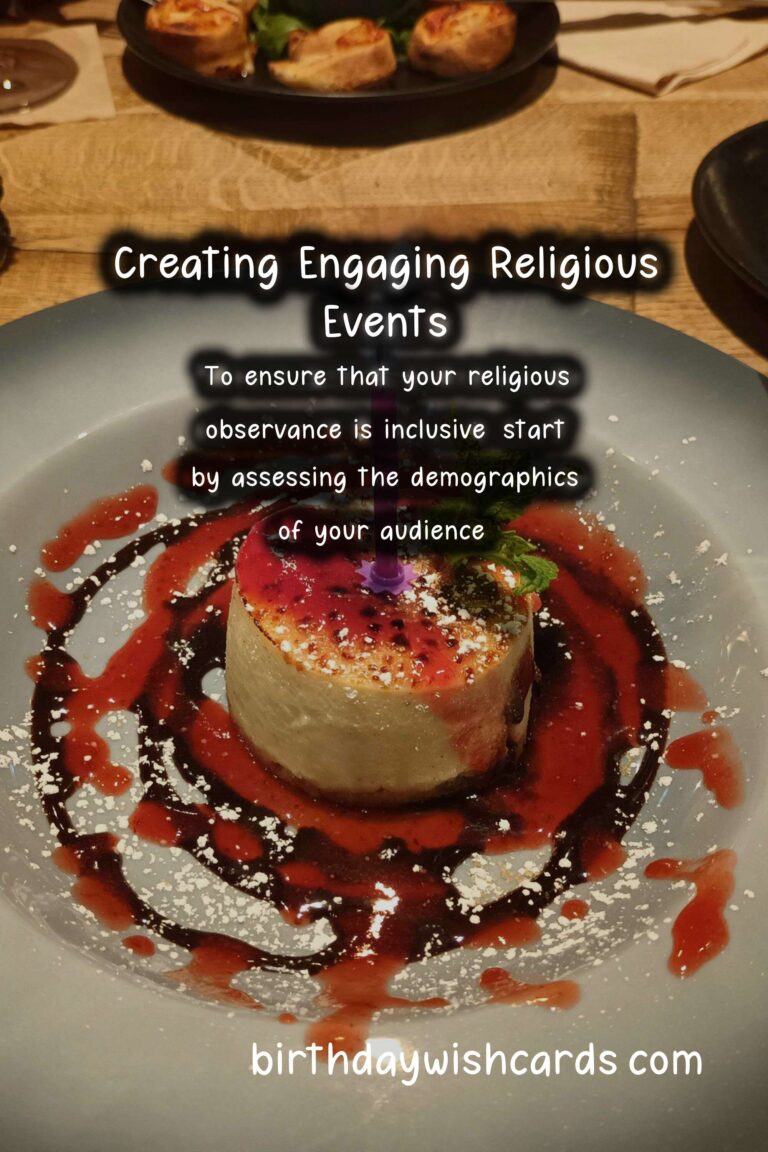
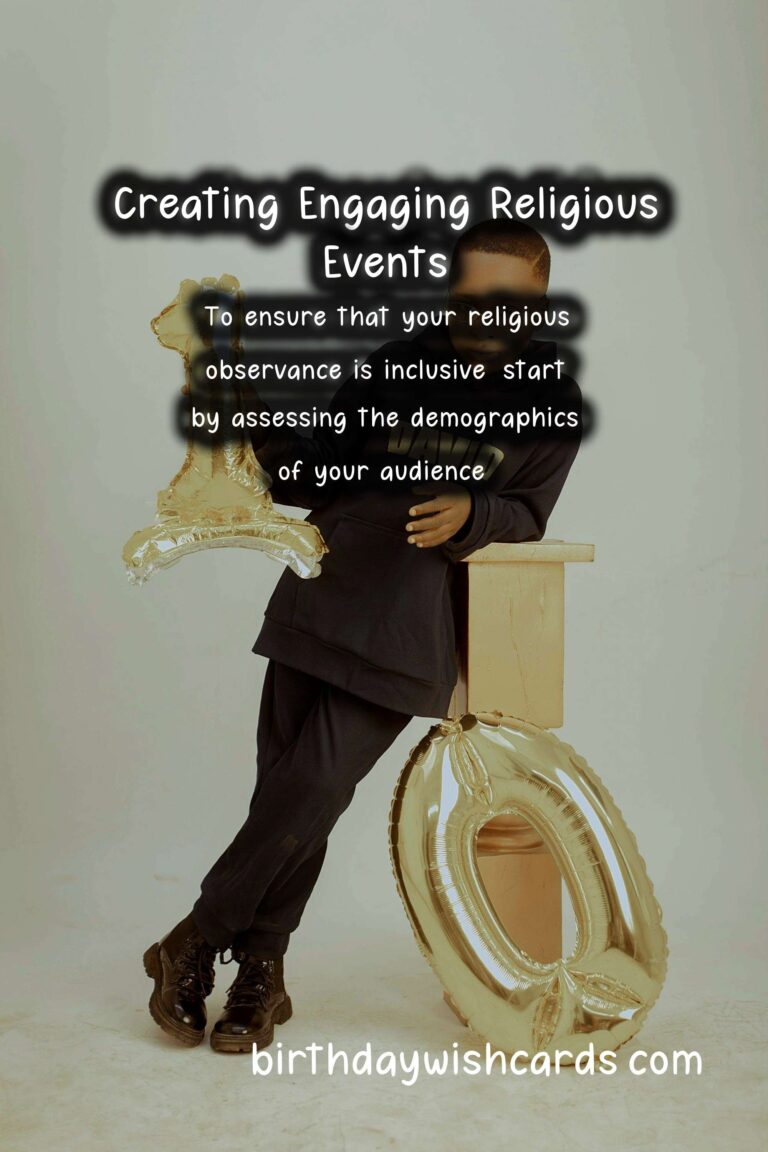
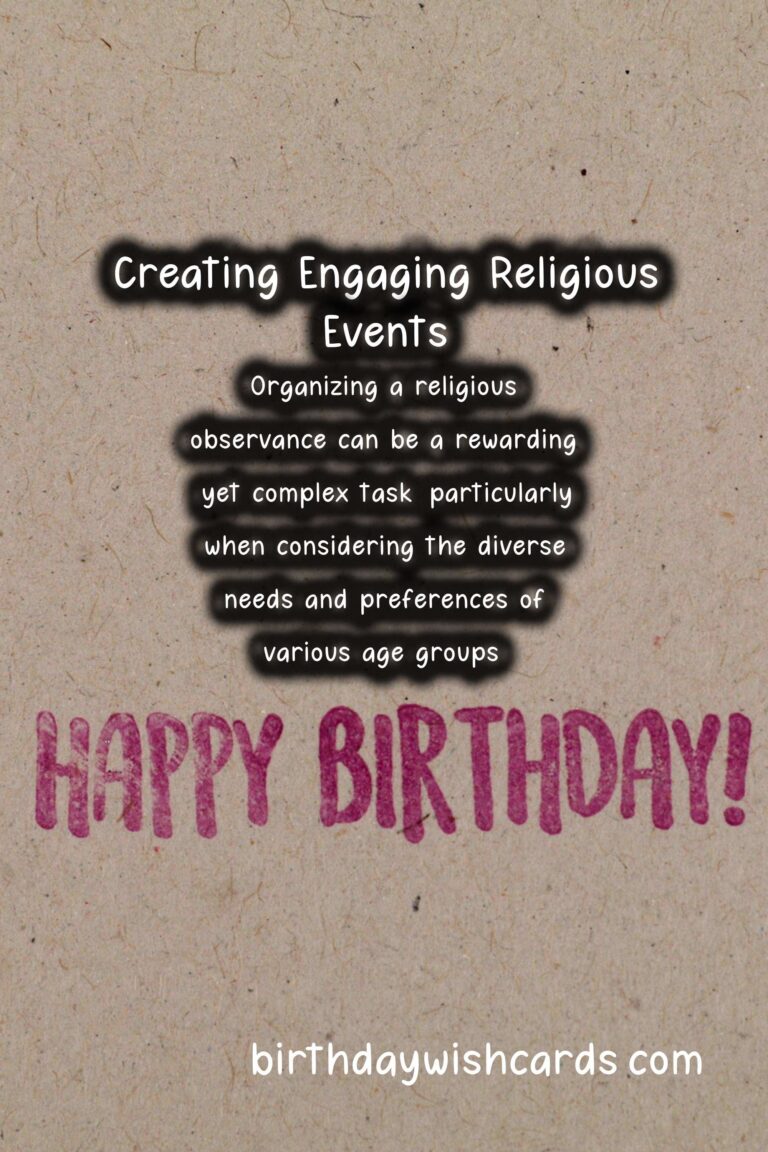
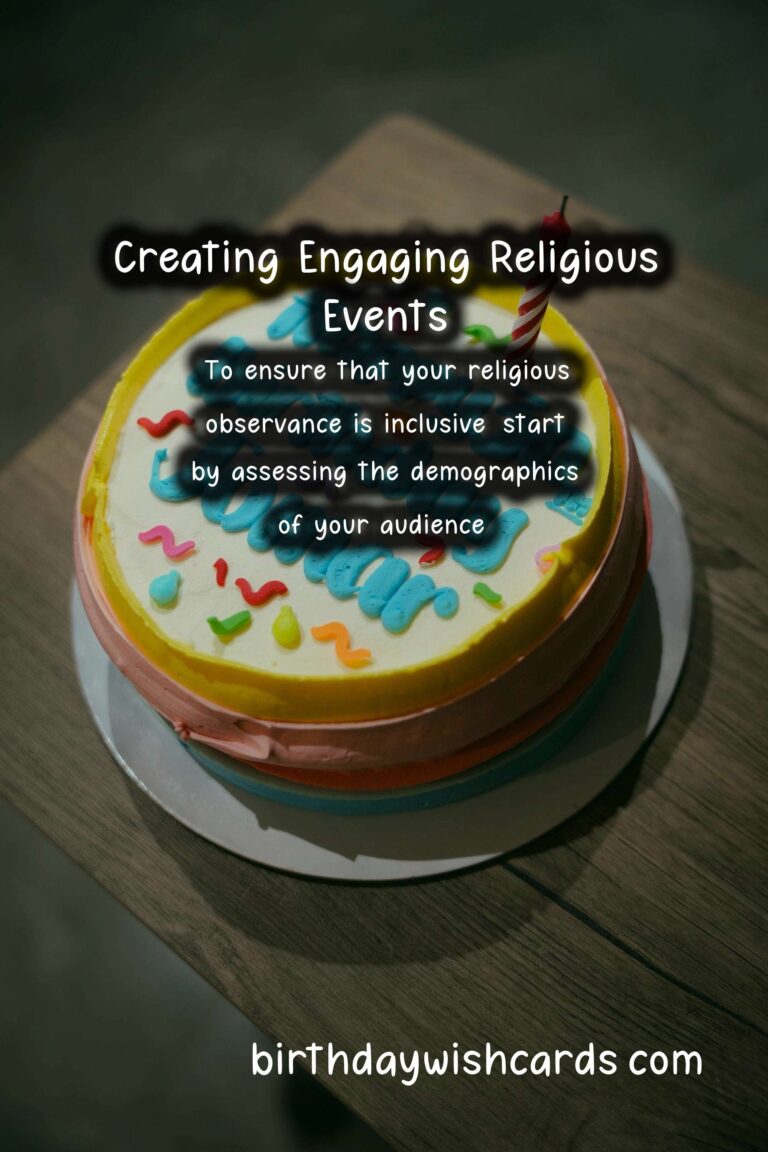
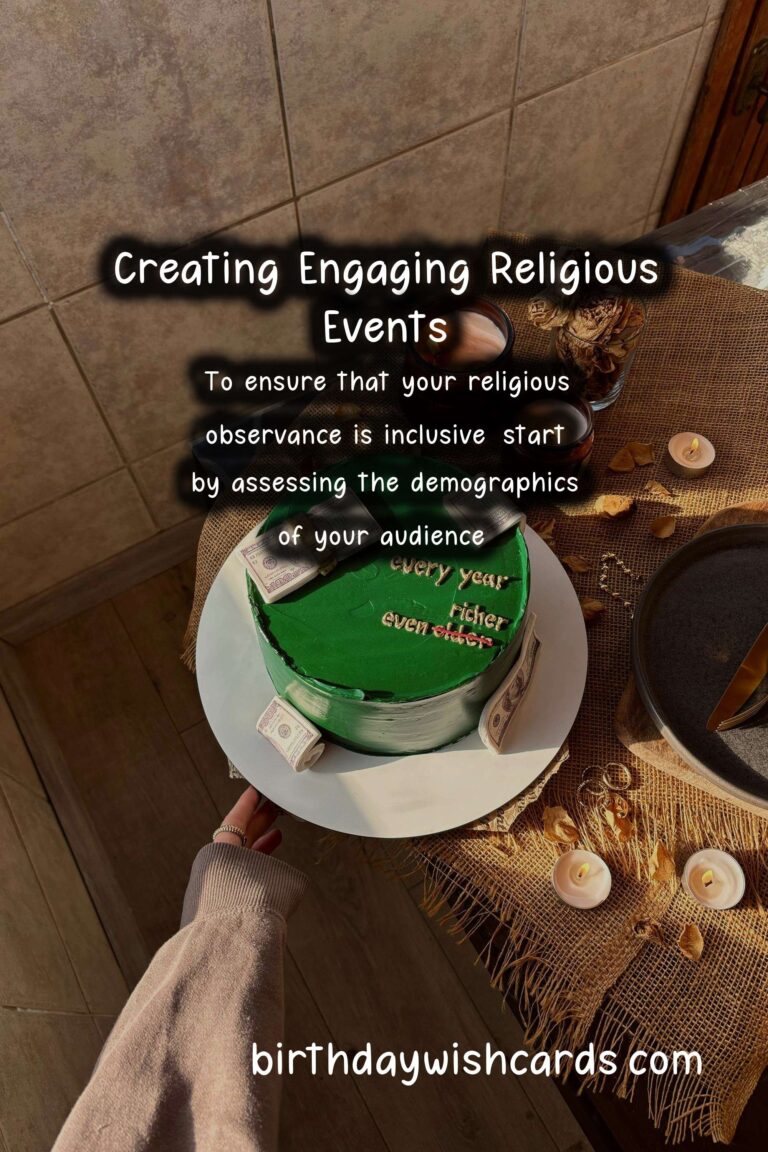
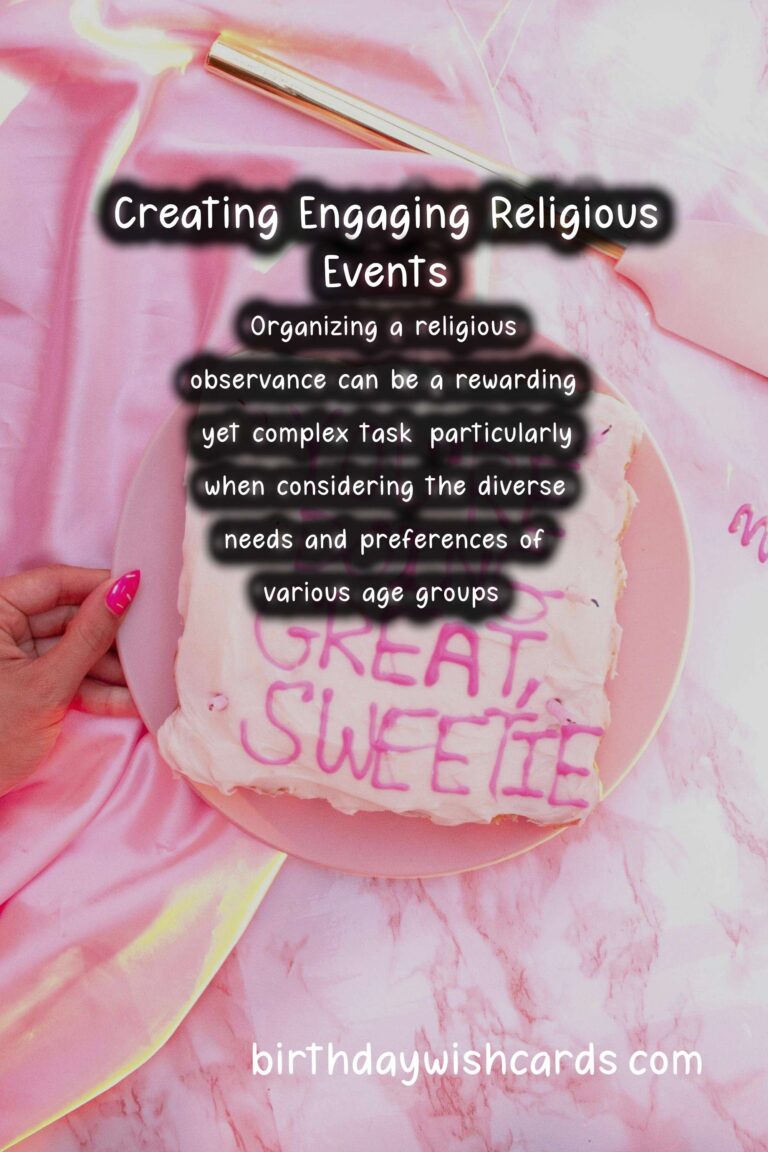
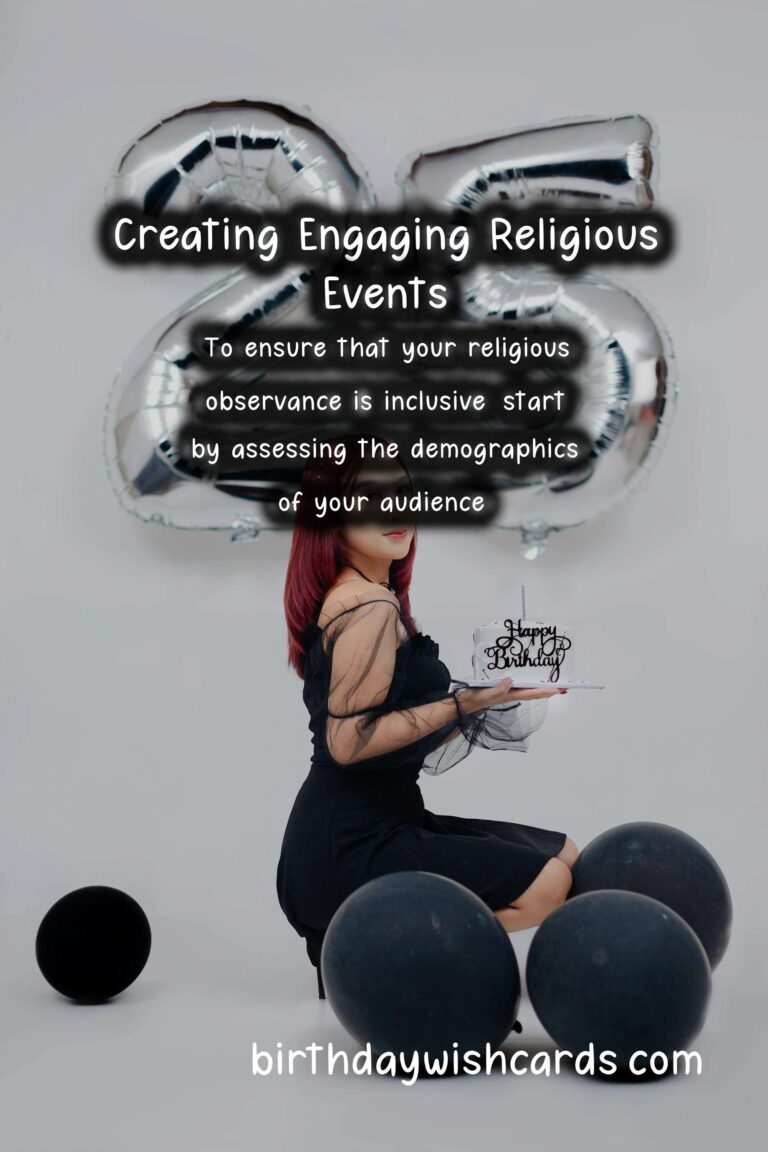
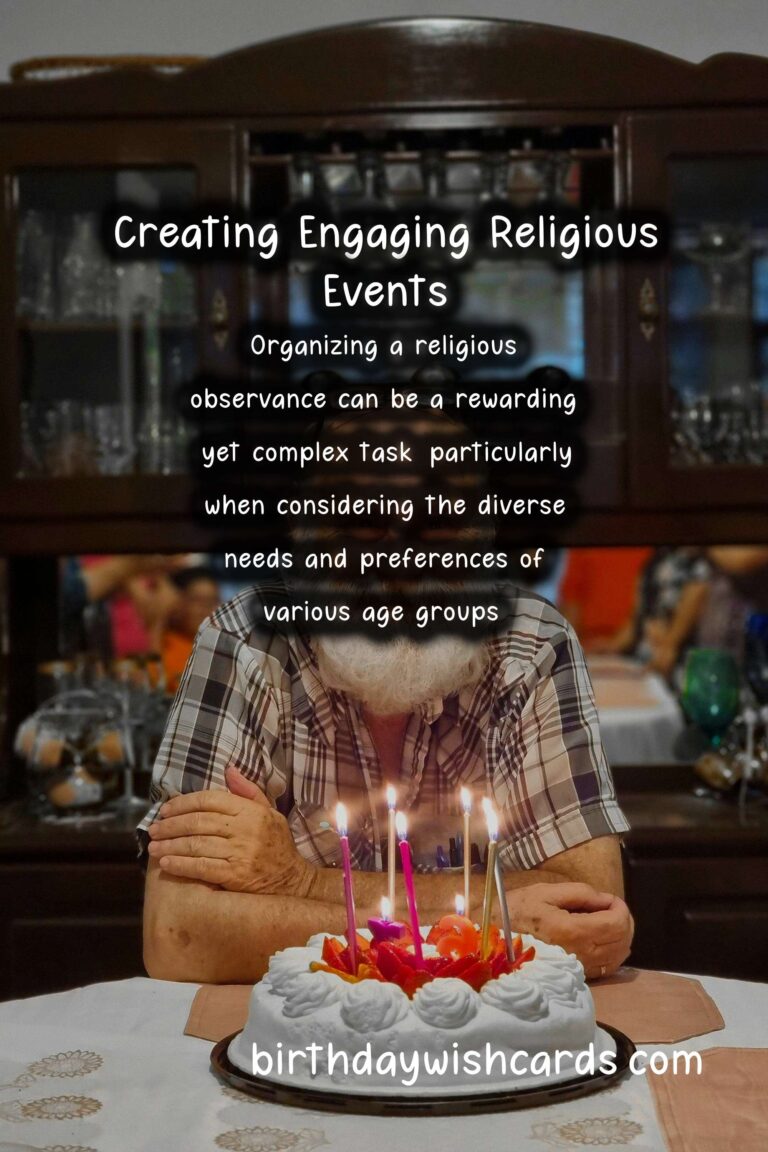
#ReligiousObservance #EventPlanning




